Medicine and Social Media: Compilation
Social media is changing the way medicine is practiced and healthcare is delivered. Web tools, expert-based community sites, medical blogs and services can facilitate the work of physicians, scientists, medical students or medical librarians and can help patients find reliable medical information online. I regularly speak about the newest developments and future implications of medicine and health 2.0 at international events.
Medicine 2.0= web 2.0 + medicine (focusing on doctor-patient communication and technologies)
Health 2.0= web 2.0 + healthcare (focusing on shaping healthcare with web 2.0 tools and concepts)
Must-read posts?
- 10 Tips for How to Use Web 2.0 in Medicine
- Open Letter to the Physicians of the World
- Dangers of Web 2.0: In Medicine
- Being Productive Online: Time-Management Lifehacks
My Slideshows:
What if Dr House used Twitter? (TEDx, The Netherlands):
Webicina, curating social media
- The Bridge: Do you want to change healthcare?
- PeRSSonalized Medicine: Follow the latest PubMed articles easily
- PeRSSonalized Medicine: A free tool to track medical information
The first Internet in Medicine University Course:
- Internet in Medicine Elective Course: Summary
- Web 2.0 in Medicine University Course: Pictures
- 3rd Semester: New Mission
- Medicine 2.0 Credit Course: 2nd Semester is Over
- Medicine 2.0 Credit Course: Reloaded!
Second Life, the virtual world and medical education:
- Top 10: Virtual Medical Sites in Second Life!
- How and Why to use Second Life for Education?
- Scientific Events in Second Life?
- Live Blogging Today: First Medical Simulation in Second Life!
- Near-real Clinical Experience in Second Life
- Unique Medical Simulation in Second Life!
- Everything about Second Life and Medical Education
- Genetics in Second Life
- Medical Training in Second Life
- Virtual Medical Center: the Future of Medical Education
- NHS London in Second Life
Education and RSS:
- 7 Tips: How to track the information you need!
- 7 Tips: How to be up-to-date in genetics/genomics?
- Medical Education Evolution: Time for a change
- Modern Education: Mind Maps and Second Life
- In case you don’t want to deal with RSS
- Web 2.0 and clinical genetics: in practice
- 10 Tips: how to search for genetic conditions
- How can web 2.0 help medicine?
Wikis, medical databases:
- Launching MedPedia: From the perspective of a Wikipedia administrator
- Google vs Wikipedia? No!
- Medicine in Wikipedia: Reliable Information?
- Wikipedia: Reliable Sources and Gene Wiki
- WikiProfessional Alpha Testing: a wiki of web 3.0
- Why to work in Wikipedia: I’ve been mentioned in Nature Medicine
- Radiopaedia: a wiki for radiology
- Ask Dr Wiki vs medicine in Wikipedia
- Why to use Wikipedia: answer for Eye on DNA
- Genetic Wikis
- SNPedia: DNA variations everywhere
Medical Communities:
- CureTogether: Patients and Researchers
- OpenECGproject: Open Source for Electrocardiography
- Digg-like site for physicians and scientists
- The DNA Network: the best idea of the last months
- List of the best medical blogs
- MyBioWizard: Your homepage for medical and life science information
- DoctorsHangout.com: Real Social Network
Microblogging and communication:
- If you’re new to Twitter
- Twitter And Health 2.0: A Visual Story
- Follow me on Twitter, if…
- 10 Tips: How to filter discussions on Twitter?
- Twitterview: The Future of Medicine in 140 Characters
- The Youngest Twitterer and the Future of Health Management
- What you have to know about Twitter
- Quality of Medical Information Online: A Twitter Discussion
- Twitter for Health and Medicine
- 10 Reasons Why I Use Twitter
- Tips and Tricks: Is Twitter reliable?
- Health Tweeple to Follow
- Twitter for Health and Medicine
Medical search engines, tools:
- Personalized Medical Metasearch Engine
- Scienceroll Medical Search: Preview the results!
- Customize Medical Search with ScienceRoll
- Scienceroll Personalized Medical Search: Updates
- Personalized Medical Search Engine: New Databases
- Google Health: The First Steps
- New Search Engines in Medicine
- VisualDxHealth: Visual health care tools and widgets
- Visual Medical Dictionary
- AllPlus.com: Multi-Dimensional Search
- A searchable categorized directory of health-related websites
- NextBio: the search engine for life sciences data
- PediDraw: A web-based tool for drawing a pedigree in genetic counseling
- A great list of Health 2.0 companies
- Quicklinks: pimp notes, medical animations and mnemonics
- Doctors should Google themselves?
Podcast, Videocast:
- From Doctor 2.0 to Patient 2.0: On Video
- Telemedicine: In action
- NIH Video Casting
- Listen to Scienceroll! New PodCast
- JoVe: PubMed, RSS and many more
- Medical Image Viewer: An Open-Source Project
- After the Dr. Anonymous Show
Open access and journalism:
- 10 Reasons Why Nature is the Best in Science 2.0
- Open access and the future of medical journalism
- NEJM is open for web 2.0
- NEJM: Image Challenge and other Features
- Web 2.0 and Medicine in the Medical Journal of Australia
- BMJ Career Focus: A Wikipedia wizard and blogger
Sites, links, news, reviews:
- Evidence-based web 2.0
- Health Information Online: How to check the quality?
- Why Health or Medicine 2.0?
- Web 3.0 and medicine
- Trends in Health 2.0
- BlogMix: useful lists for scientists and a set of new blogs
- How to manage a hospital in the future?
- Health 2.0? I love these 2.0 terms
Online Docs and Reputation:
- Call Your Doctor Online: The Future of Medicine?
- Online Reputation: Tips and Tricks
- Web vs real life: Advice for medical students
- The E-Patient
- The Online Reputation Management Guide
- Mayo Clinic: An Online Example
- Interview with Jay Parkinson, the web-savvy doctor
- Jay Parkinson and Hello Health
- From Doctor 2.0 to Patient 2.0: On Video
Trackbacks & Pingbacks
- Scienceroll is Six Months Old! « ScienceRoll
- 2.0 in Medicine and Definitely Beyond « the story of healing
- Medicine 2.0: a new blog carnival about web 2.0 and medicine « Medicine 2.0 Blog Carnival
- 10 Tips for How to Use Web 2.0 in Medicine « ScienceRoll
- First Issue at Scienceroll (10. 06. 07.) « Medicine 2.0 Blog Carnival
- My Modern Life « ScienceRoll
- Medicine 2.0: The Second Edition « ScienceRoll
- Medicine 2.0: The Second Edition « Medicine 2.0 Blog Carnival
- PediDraw: A web-based tool for drawing a pedigree in genetic counseling « ScienceRoll
- How to manage a hospital in the future? « ScienceRoll
- Medical Ethics 2.0 : The Personal Genome
- Genetic Testing: BlogMix and a funny video « ScienceRoll
- Spring-cleaning at Scienceroll « ScienceRoll
- Modern Education: Mind Maps and Second Life « ScienceRoll
- How can web 2.0 help medicine? « ScienceRoll
- 7 Tips: How to be up-to-date in genetics/genomics? « ScienceRoll
- What’s on the web? (7 August 2007) « ScienceRoll
- Web 2.0 and Medicine in the Medical Journal of Australia « ScienceRoll
- A Medicine 2.0 Tool: Study On The Go With Medical e-Books plus Some Experiential Babbles & Lessons On Integration « the story of healing
- SciFoo lives on: in Second Life « ScienceRoll
- SciFoo lives on in Second Life: Web 2.0 and Medicine « ScienceRoll
- My Biotech Life » Medicine and Web 2.0 @ SciFoo lives on (Second Life)
- Behind the Scenes of Medical Blogs: Clinical Cases and Images « ScienceRoll
- Medicine 2.0 Carnival at Constructive Medicine « ScienceRoll
- What’s on the web? (16 September 2007): Supergenetic! « ScienceRoll
- Recent News: Medicine 2.0 « ScienceRoll
- Personalized Medicine: Health and Information Technology « ScienceRoll
- Science Blogs & Wikis: Slideshow « ScienceRoll
- Medicine 2.0 #9 at Clinical Cases and Images « ScienceRoll
- Venter on the Web 2.0 summit, Mayer on Google Health « Pimm - Partial immortalization
- Web Directories of Medicine and Web 2.0 « ScienceRoll
- New facilities provided by the medicine and internet: My first peer-reviewed article « ScienceRoll
- Medicine 2.0 #11 at The Health Wisdom Blog « ScienceRoll
- Web 2.0 Style: Funny Logos « ScienceRoll
- An other step in medicine 2.0 « ScienceRoll
- The First Birthday of Scienceroll! « ScienceRoll
- Medicine 2.0 Edition #12 at Medical 2.0 « ScienceRoll
- New Slideshows about Web 2.0 and Medicine « ScienceRoll
- Edublog Awards 2007 Finalists Announced! « ScienceRoll
- Medicine 2.0 Edition #13 at Web 2.0 and Medicine « ScienceRoll
- MaRS Blog - Innovation and Commercialization in Canada » Blog Archive » Medicine 2.0: Online peer review? Facebook for physicians?
- Teleread Today! « the story of healing
- » Edublog Awards 2007 Finalists Announced! The Edublog Awards
- What’s on the web? (1 December 2007) « ScienceRoll
- Medicine 2.0 Edition at Medical Education Blog « ScienceRoll
- Medicine 2.0 in 2015 » MedBlog.nl
- Medicine 2.0 Edition at MedBlog.nl « ScienceRoll
- Gezondheid in 2015 - Frankwatching
- Medicine 2.0 pada Thariqul Huda
- Medicine 2.0 Carnival coming here! « monash medical student
- Medicine 2.0 Carnival - 16th edition « monash medical student
- Medicine 2.0 at Monash Medical Student « ScienceRoll
- Web Resources of Pathology: Again! « ScienceRoll
- Medicine 2.0 carnival at The Story of Healing « ScienceRoll
- Everything about Second Life and Medical Education « ScienceRoll
- Web 2.0, the Future of Medicine and Healthcare » Dani Iswara .Net » Indonesian Medical Doctor Weblog
- Media In Medicine: Bertalan Mesko’s Scienceroll and More Medicine 2.0, an Interview « the story of healing
- Dangers of Web 2.0: In Medicine « ScienceRoll
- On the Dangers of Web 2.0 in Medicine ( a response) « ADAM’S REEF
- Medicine 2.0 Carnival: Health 2.0 Apps and Virtual Education « ScienceRoll
- geekydoc » Blog Archive » Welcome to Geekydoc
- ScienceRoll
- How Not to Give a Presentation! « ScienceRoll
- Call Your Doctor Online: The Future of Medicine? « ScienceRoll
- Web 2.0 and Medicine Course: Join Us! « ScienceRoll
- Edition #25 at Discovering Biology in a Digital World « Medicine 2.0 Blog Carnival
- Medicine 2.0 carnival at Discovering Biology in a Digital World « ScienceRoll
- Evidence-based web 2.0 « ScienceRoll
- Edition #27 at Highlight HEALTH 2.0 « Medicine 2.0 Blog Carnival
- Medicine 2.0 carnival at Highlight HEALTH 2.0 « ScienceRoll
- Medical Education Evolution: Time for a change « ScienceRoll
- Innovation Integration Timeline: Where is Medicine 2.0? « ScienceRoll
- E-Health on Slides « ScienceRoll
- Why Health or Medicine 2.0? « ScienceRoll
- Medicine 2.0 Edition #29 « monash medical student
- Web vs real life « ScienceRoll
- Medical Education Evolution: A Growing Community « ScienceRoll
- Health 2.0 and Medicine 2.0: Tensions and Controversies in the Field « ScienceRoll
- Second Life Blog » Second Life az egészségügyben
- Edition #30 at SharpBrains « Medicine 2.0 Blog Carnival
- Medicine 2.0 Carnival at SharpBrains « ScienceRoll
- Medical Education Evolution « El Weblog de Referencia en RCM
- From a Medical Blog to an Online Service: A bridge between physicians and e-patients « ScienceRoll
- El analfabetismo digital de los médicos | Dr. Mouse
- The course « The First Medicine 2.0 Course
- racetalkblog.com » Q&A with “Medicine 2.0″ Blogger Bertalan Meskó
- Interviews about Medicine 2.0 « ScienceRoll
- Medicine 2.0 Blog Carnival #32 « ScienceRoll
- Medicine 2.0 Blog Carnival #33 « ScienceRoll
- Edition #33 at Ivor Kovic, MD « Medicine 2.0 Blog Carnival
- Medicine 2.0 Microcarnival Edition « ScienceRoll
- Medicine 2.0 Microcarnival Edition « Medicine 2.0 Blog Carnival
- Medicine 2.0 Blog Carnival: Edition 35 « ScienceRoll
- Turulcsirip - Bertalan Meskó
- Where the stone goes when there’s nobody to catch it « Flying Stones
- Edition #36 at Pharmamotion « Medicine 2.0 Blog Carnival
- Turulcsirip - Bertalan Meskó
- PeRSSonalized Medicine: A free tool to track medical information « ScienceRoll
- Medical Educator Interviews Berci Meskó, a Medical Student and Web Innovator at Medical Educator - Medical students, revise for your OSCE medical student exam with our free MCQs, EMQs, videos, podcasts, downloads.
- Edition #37 at Health Blogs Observatory « Medicine 2.0 Blog Carnival
- Medicine 2.0 Blog Carnival: Edition 37 « ScienceRoll
- Medicine 2.0 Blog Carnival: Edition 37 | Move2Ideas
- Scienceroll.com: Weekly Introduction « ScienceRoll
- Course For medical students « Studentmed’s Blog
- The reason why I blog and microblog « ScienceRoll
- » Physician Social and Professional Networks Life in the Fast Lane
- Medicine 2.0 Blog Carnival: Edition 38 at Nerdoc « Medicine 2.0 Blog Carnival
- Medicine 2.0 Blog Carnival: Edition 38 at Nerdoc « ScienceRoll
- Medicine 2.0 Blog Carnival: Edition 39 at Medical 2.0 « ScienceRoll
- Surveillance 2.0: Social Media’s Role In Preventing The Next Global Pandemic « Uncommon Dissent
- jmohan.org » Medicine 2.0
- Web 2.0 for Emergency Physicians
- Science Foo Camp 2009 « ScienceRoll
- Web 2.0 for Emergency Physicians | Life in the Fast Lane
- Scienceroll.com: Weekly Introduction ||| Rx Medved Site
- Médecine 2.0
- Web 2.0 in Action in Hospitals « ScienceRoll
- Science Report » Blog Archive » Web 2.0 in Action in Hospitals
- Scienceroll.com: Weekly Introduction | Divine Heal
- Private Practice Social Media Policy « ScienceRoll
- Definition of Health 2.0 and Medicine 2.0 « ScienceRoll
- Defining “Health 2.0″ And “Medicine 2.0″ - Better Health
- Social Media Policy For Private Practice and Doctors | Social Media Policy Templates
- Digital Literacy and Medicine 2.0: Video for Stanford University « ScienceRoll
- How to start social media as doctors? « ScienceRoll
- Tips For Physicians Who Want To Get Involved In Social Media - Better Health

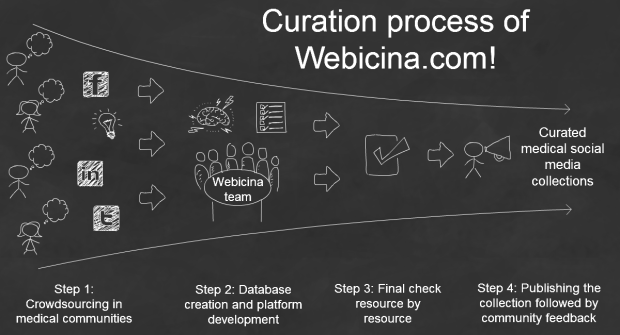
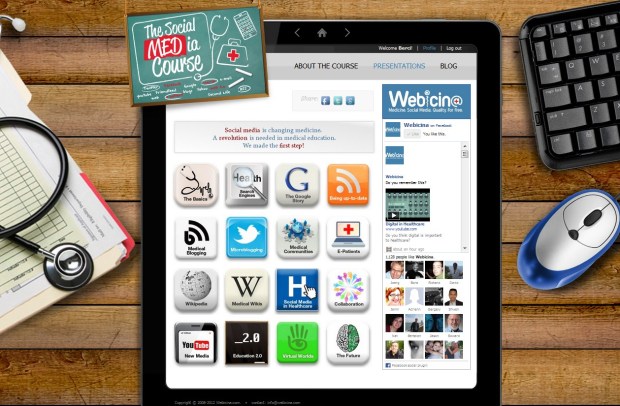
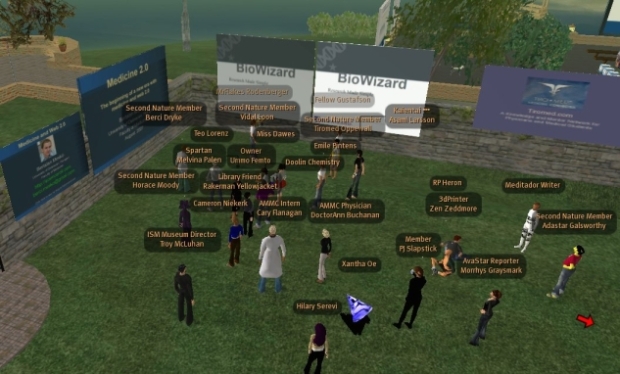
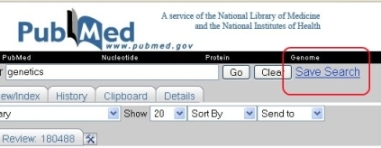
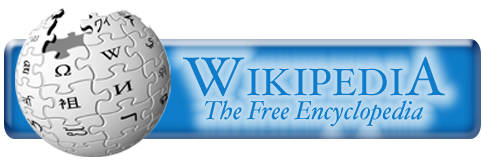


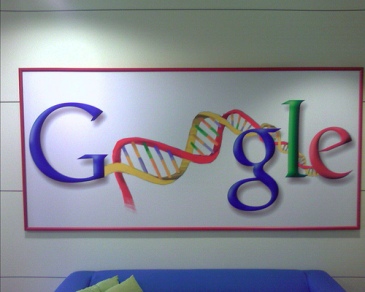








Hello,
Your blog, and the Blog Carnival are very interesting… more especially as I write a French blog on a close topic (ophthalmology and Web 2.0) !
Comme je parle francais un peu, je dois créer un RSS feed pour votre blog. 🙂
C’est vraiment intéressant que notre subject est le meme…
I hope it was understandable… I add you to my blogroll.
Will there be a Web 2.0 meltdown?
Definition of Meltdown – 1. a state of complete network overload that grinds all traffic to a halt 2. a disaster comparable to a nuclear meltdown
Considering content and community are king, I don’t think a Web 2.0 meltdown is on the horizon. It’s no secret that major players like Google, News Corp, Yahoo and MSN are steadily acquiring various Web 2.0 brands for very large sums of money. Predicting acquisition trends among these companies is not too difficult of a task for any web savvy marketer.
Although I just recently started playing around with some different Web 2.0 brands, I quickly witnessed unlimited potential for their continued long-term success.
Most current leading Web 2.0 brands fall into what I refer to as, general categories which are comprised of countless sub-categories. First, Web 2.0 brands introduced “categories”. Next, Web 2.0 brands will introduce “sub-categories”, which will allow Web 2.0 brands to stabilize their already firm positioning and ultimately become authoritative figures on the Internet.
It’s no secret that “keyword phrases” carry much better CTRs (click-thru-ratios) and ROIs
(return-on-investments) than “genearl keywords” do – when engaging in a PPC (pay-per-click) marketing campaign. For example, on the page I am originally posted this article on I notice the page’s title tag read “Web 2.0 Bubble Trouble?”. This title tag is much more suitable for this page’s topic, as opposed to something more general like, “Web 2.0”.
The same applies to Web 2.0 brands as the diversify their portfolios introducing sub-categories of their already existing brand’s general or niche category. Google, News Corp, Yahoo and MSN are strategically acquiring emerging Web 2.0 brands for a reason. At the end of the day, we all know what that reason is – to make lots of money!
My conclusion:
As companies like, Google, News Corp, Yahoo and MSN pay BIG dollars to acquire Web 2.0 brands they are doing so for a few reasons. First they are looking for creative ways to push new, in-house products and services to targeted consumers and businesses alike. I would have to argue that Google is leading the pack in this arena.
Next, they are trying to position their companies for rapid long-term growth, each headed in strategically aligned directions. In my opinion, all 3 are great companies and not any one of them is better than the other in regards to their directions. Rest assured that the overall concept, audience, and appeal of any recently acquired or soon to be acquired Web 2.0 brand is a solid reflection of the direction the acquiring company is headed in.
Like it or not Web 2.0 is here to stay!
This is great list …. very usefull …
Here is something that i came across recently this web 2.0 based free service helps discovering newer scientific relations across abstracts. it provides manually curated and annotated sentences for the keywords of your choice.maps the extracted entities (genes, processes, drugs, diseases etc) to multiple ontologies. just play around with their gene, disease, etc entity types and you can actually track a gene or process across various diseases across abstracts :), check it out http://www.xtractor.in
This Is The Best Medical Site For Doctors And Medical Students
http://doctorstube.blogspot.com/
This is really Good site
really this is useful information.
is this magic lamp?
really this looks great
I agree that the plethora of Web 2. websites is changing many industries and in particular medicine. Patients are much more likely to be well-informed about their issue and options for treatment than prior to the internet and Web 2.0. The downside is that there can be information overload and confusion can arise as much as enlightenment. On the whole though I welcome the opportunity to discover more about a medical condition and the options available to treat it.
I could not possibly conduct a case review with any accuracy without having seen the whole volume of notes. ,
There is actually research being carried out at the University of Nottingham in Second Life to see if mood and anxiety could be improved using Second Life!
Those carrying out the research need people who already use Second Life to spend some time in world and to complete a questionnaire before and after doing this. Personal details don’t even have to be given if you would prefer not to. It takes about 30-40 minutes.
If you are interested in taking part please send an e-mail to secondliferesearch@live.co.uk and the investigators can send you more information about the research.
great post, thnaks for share this info 😉
I really Like Medical 2.0 Its Great For Medical web World To Supporting Medi Web M Writting Blog Please Veiw that Cancer : Obesity invites Cancer
I really admire the work you are doing through this website. Thank you for this information.
It is the hard and complicated work to be done to get updated with the new in the human health and become ready for any of the raised new problems with the people under any of the different conditions that could be passed. The studies and the researches will never stop to get know what is going on, and put the suitable solutions that work with that matter, whatever it is.
I have heard of Web 2.0 a lot but now there is medicine 2.0… I find so much precious info in this post… The video is so informative.
We had some discussion about “Medicine 2.0” while I was in training to be a medical assistant but you have clarified some points for me, thanks.
Good work over again. I am looking forward for your next post=)
The democratization effect of social media will invariably have a positive effect on the free-exchange of intellectual property and the collaboration of scholarship. Ultimately, inventions will result. One can imagine Pasteur and Koch conferring about immunology theories during the 19th century. Medical breakthroughs will inevitably ensue with the communication facility occasioned by social media.
really this looks great…I really admire the work you are doing through this website.
This site really looks good.
Hi, real appreciation for the great article and the information, it is really goodand helpful.Thankyou
Fantastic publish, very informative. I wonder why the opposite specialists of this sector do not notice this. You must continue your writing. I’m sure, you have a great readers’ base already!|What’s Taking place i am new to this, I stumbled upon this I have discovered It positively helpful and it has aided me out loads. I’m hoping to contribute & aid other customers like its aided me. Good job.
Medicine 2.0 Collection: I maintain the biggest collection of links and posts focusing on web 2.0 and medicine. […]
Now Social Media is the most important part of our life. Business, Education, communication, treatment, every way Social Media is helpful to us.
Web 2.0 properties are one of the great ways to blogging or marketing of Medicine. Very helpful post…Thank you
Wonderful! This really answered my problem, thank you!
Stem cells are “non-specialized” cells that have the potential to form into other types of specific cells, such as blood, muscles or nerves. They are unlike “differentiated” cells which have already become whatever organ or structure they are in the body. Stem cells are present throughout our body, but more abundant in a fetus.
Medical researchers and scientists believe that stem cell therapy will, in the near future, advance medicine dramatically and change the course of disease treatment. This is because stem cells have the ability to grow into any kind of cell and, if transplanted into the body, will relocate to the damaged tissue, replacing it. For example, neural cells in the spinal cord, brain, optic nerves, or other parts of the central nervous system that have been injured can be replaced by injected stem cells. Various stem cell therapies are already practiced, a popular one being bone marrow transplants that are used to treat leukemia. In theory and in fact, lifeless cells anywhere in the body, no matter what the cause of the disease or injury, can be replaced with vigorous new cells because of the remarkable plasticity of stem cells. Biomed companies predict that with all of the research activity in stem cell therapy currently being directed toward the technology, a wider range of disease types including cancer, diabetes, spinal cord injury, and even multiple sclerosis will be effectively treated in the future. Recently announced trials are now underway to study both safety and efficacy of autologous stem cell transplantation in MS patients because of promising early results from previous trials.
History
Research into stem cells grew out of the findings of two Canadian researchers, Dr’s James Till and Ernest McCulloch at the University of Toronto in 1961. They were the first to publish their experimental results into the existence of stem cells in a scientific journal. Till and McCulloch documented the way in which embryonic stem cells differentiate themselves to become mature cell tissue. Their discovery opened the door for others to develop the first medical use of stem cells in bone marrow transplantation for leukemia. Over the next 50 years their early work has led to our current state of medical practice where modern science believes that new treatments for chronic diseases including MS, diabetes, spinal cord injuries and many more disease conditions are just around the corner.
There are a number of sources of stem cells, namely, adult cells generally extracted from bone marrow, cord cells, extracted during pregnancy and cryogenically stored, and embryonic cells, extracted from an embryo before the cells start to differentiate. As to source and method of acquiring stem cells, harvesting autologous adult cells entails the least risk and controversy.
Autologous stem cells are obtained from the patient’s own body; and since they are the patient’s own, autologous cells are better than both cord and embryonic sources as they perfectly match the patient’s own DNA, meaning that they will never be rejected by the patient’s immune system. Autologous transplantation is now happening therapeutically at several major sites world-wide and more studies on both safety and efficacy are finally being announced. With so many unrealized expectations of stem cell therapy, results to date have been both significant and hopeful, if taking longer than anticipated.
What’s been the Holdup?
Up until recently, there have been intense ethical debates about stem cells and even the studies that researchers have been allowed to do. This is because research methodology was primarily concerned with embryonic stem cells, which until recently required an aborted fetus as a source of stem cells. The topic became very much a moral dilemma and research was held up for many years in the US and Canada while political debates turned into restrictive legislation. Other countries were not as inflexible and many important research studies have been taking place elsewhere. Thankfully embryonic stem cells no longer have to be used as much more advanced and preferred methods have superseded the older technologies. While the length of time that promising research has been on hold has led many to wonder if stem cell therapy will ever be a reality for many disease types, the disputes have led to a number of important improvements in the medical technology that in the end, have satisfied both sides of the ethical issue.
CCSVI Clinic
CCSVI Clinic has been on the leading edge of MS treatment for the past several years. We are the only group facilitating the treatment of MS patients requiring a 10-day patient aftercare protocol following neck venous angioplasty that includes daily ultrasonography and other significant therapeutic features for the period including follow-up surgeries if indicated. There is a strict safety protocol, the results of which are the subject of an approved IRB study. The goal is to derive best practice standards from the data. With the addition of ASC transplantation, our research group has now preparing application for member status in International Cellular Medicine Society (ICMS), the globally-active non-profit organization dedicated to the improvement of cell-based medical therapies through education of physicians and researchers, patient safety, and creating universal standards. For more information please visit http://www.neurosurgeonindia.org/
Google the “new world order” please people! Spread the truth on…
Can you please send by e-mail me the code for this script or please tell me in detail concerning this script?
I too believe that Web 2.0 will change the way medicine is practiced and healthcare information is delivered. More and more people turn to the web for information prior to a paying their doctor a visit. It is not too far fetched to assume that even selecting a doctor has a lot to do with his/her online presence and influence on the web. I am not sure if this is all good though; as long as the information is accurate and the influence is well deserved (and not artificially developed through web promotion practices), this could serve healthcare. If not, it could lead to people applying unreliable advice; a matter that deserves everyone’s FULL attention
Indeed, Web 2.0 entered the medical world, and social media will follow. I imagine patients and physicians discussing symptoms on Twitter, or posting pictures on Facebook in order to get a diagnosis. Why not?
Because it’s not safe and lead to privacy/legal issues. There are private and better ways to do it online.
This is really interesting, You are a very skilled blogger.
I have joined your rss feed and look forward to seeking more of your wonderful
post. Also, I have shared your web site in my social networks!
Good post, its nice information thanks.
Thanks for sharing your views. Great page
Very descriptive article, very good information for everyone